Abstract
Pittman, K. A. (Agricultural Research Service, Beltsville, Md.), and M. P. Bryant. Peptides and other nitrogen sources for growth of Bacteroides ruminicola. J. Bacteriol. 88:401–410. 1964.—Representative strains of Bacteroides ruminicola were found to utilize peptide nitrogen or ammonia nitrogen, but not to utilize significant amounts of free amino acid nitrogen or the nitrogen from a variety of other low molecular weight compounds for growth. All strains grew well in a defined medium containing glucose, minerals, B-vitamins, heme, volatile fatty acids, methionine, and cysteine, with ammonia as the main nitrogen source. Methionine and cysteine were required by some strains. The only compounds found to replace ammonia as the main nitrogen source were a few proteins; tryptic digests of protein; peptide-rich fractions of Sephadex G-25 fractionated tryptic digests of casein; and the octapeptides, oxytocin and vasopressin. Most of the nitrogen present in these compounds was utilized. However, the organism did not utilize nitrogen from any of 12 dipeptides, triglycylglycine, glutathione, or mixtures of free amino acids. Possible reasons for the inability of B. ruminicola to utilize low molecular weight nitrogen compounds are discussed.
Full text
PDF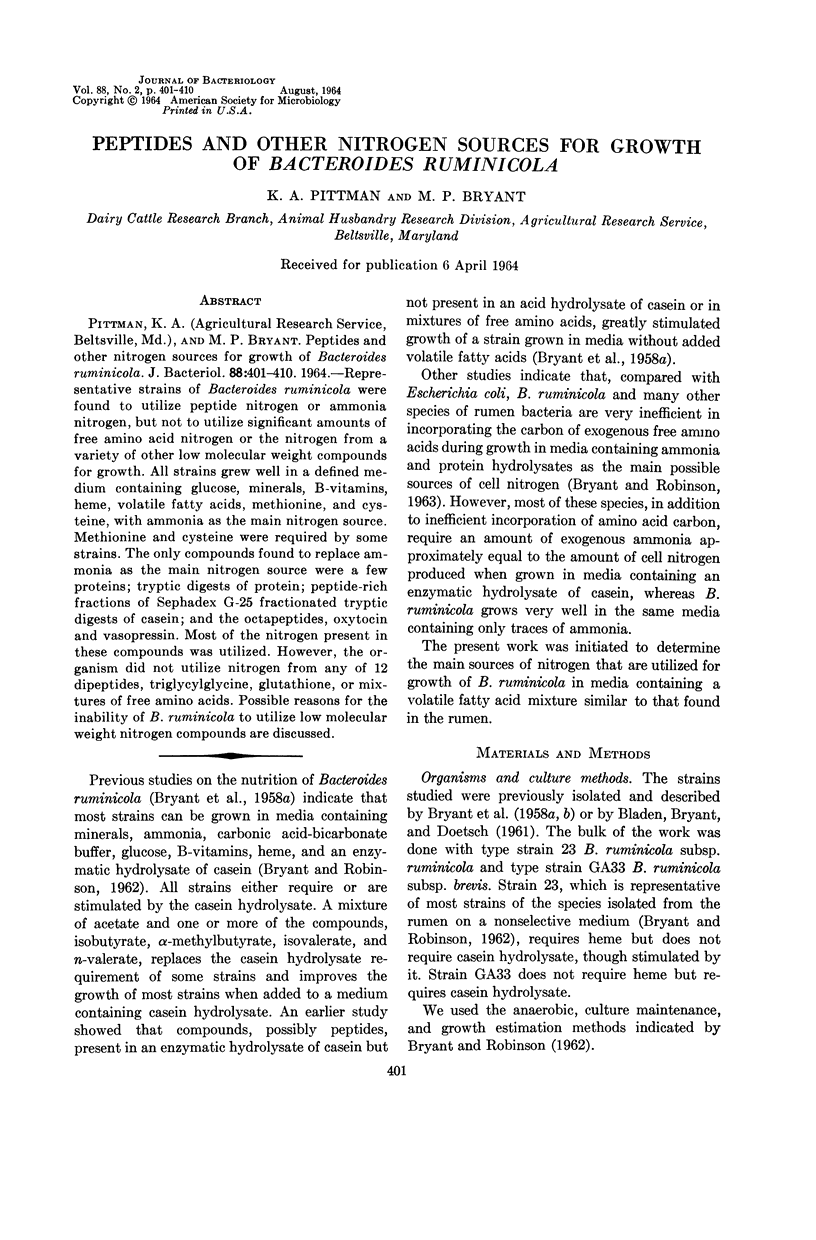
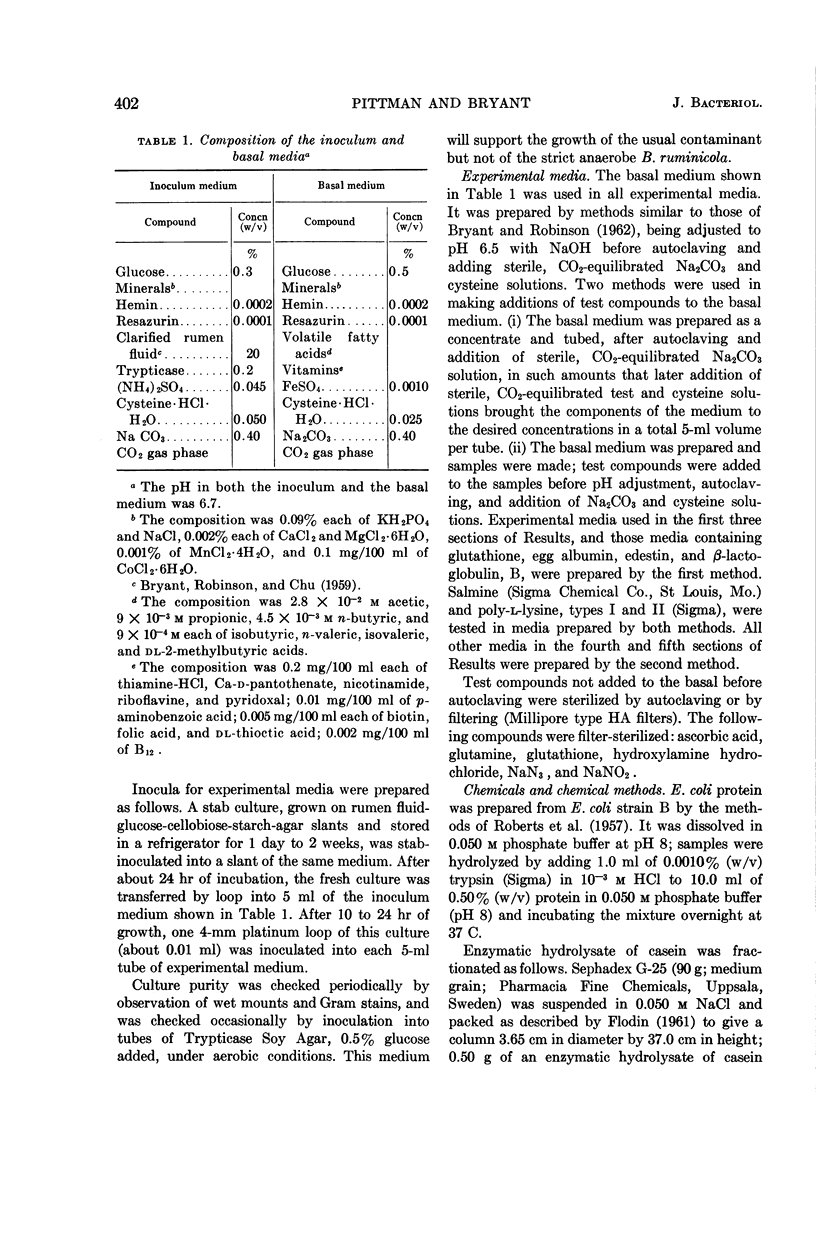
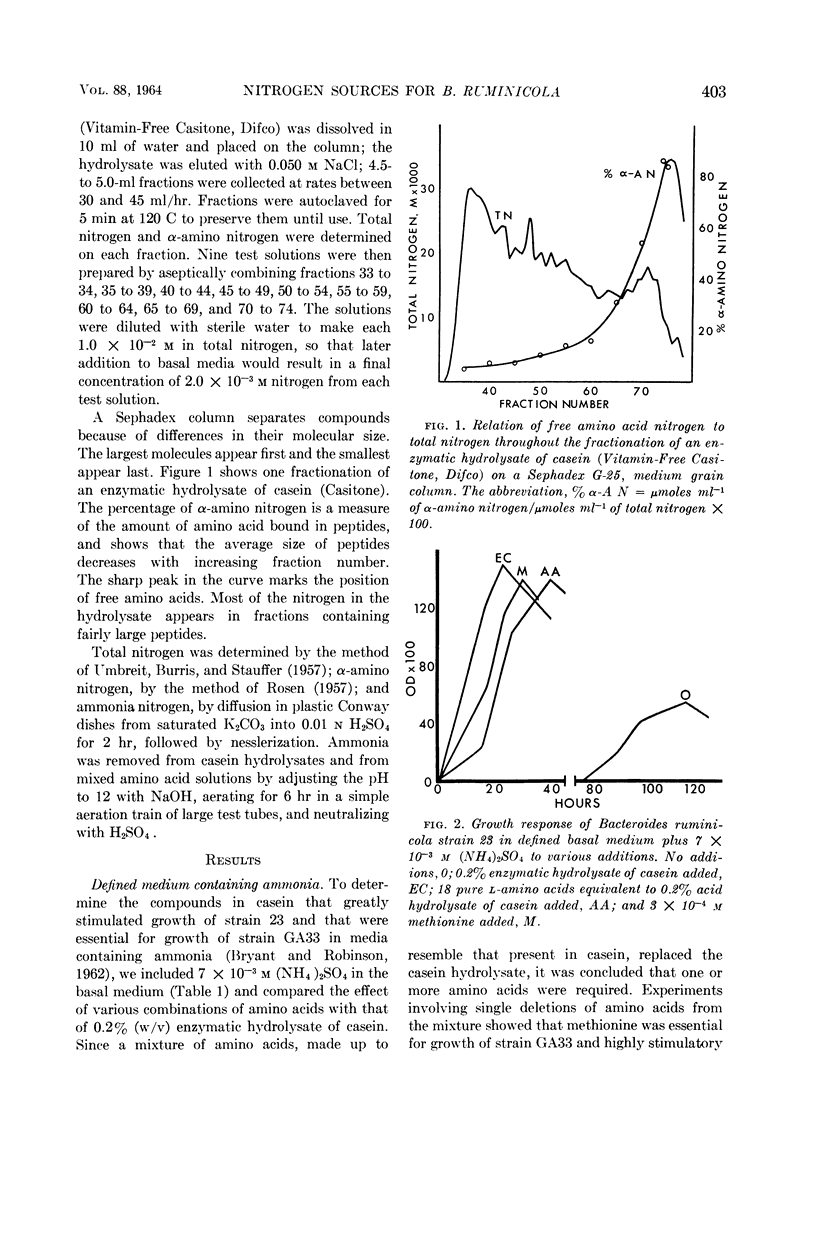
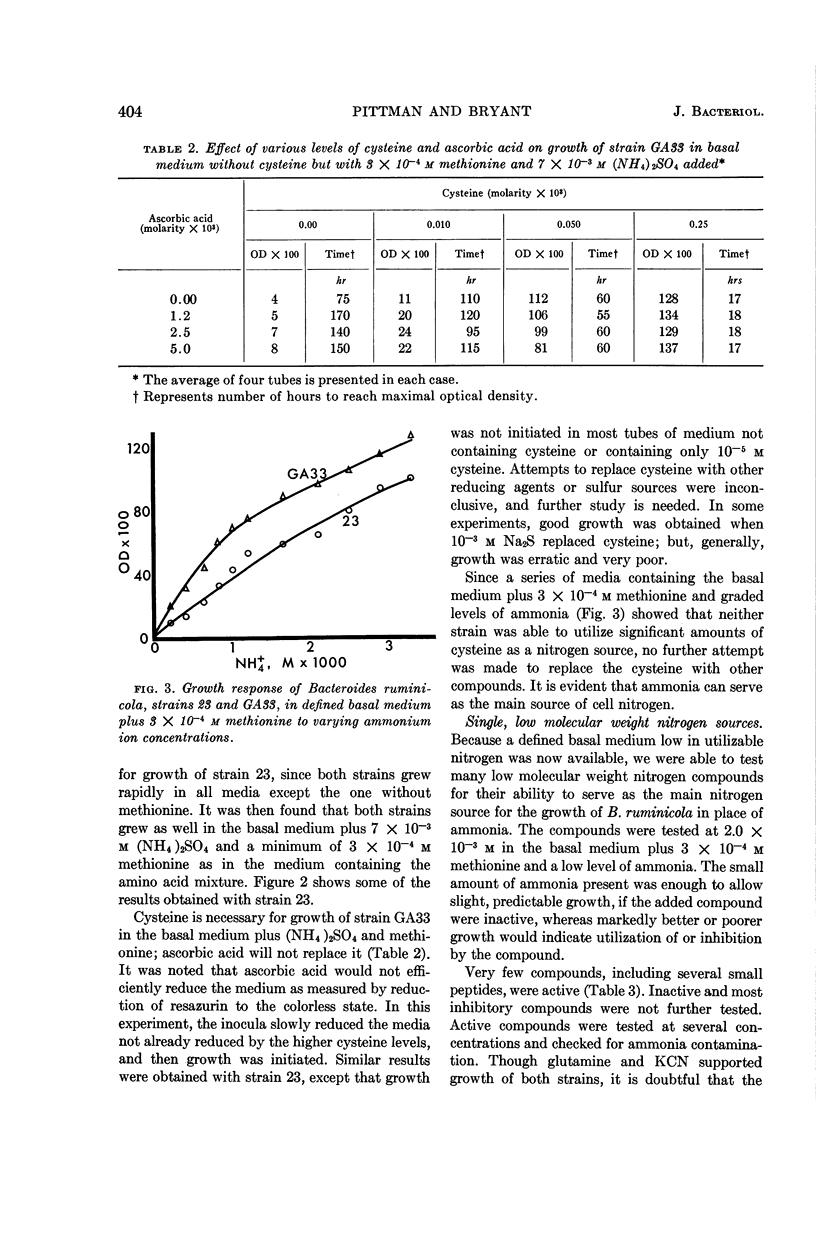
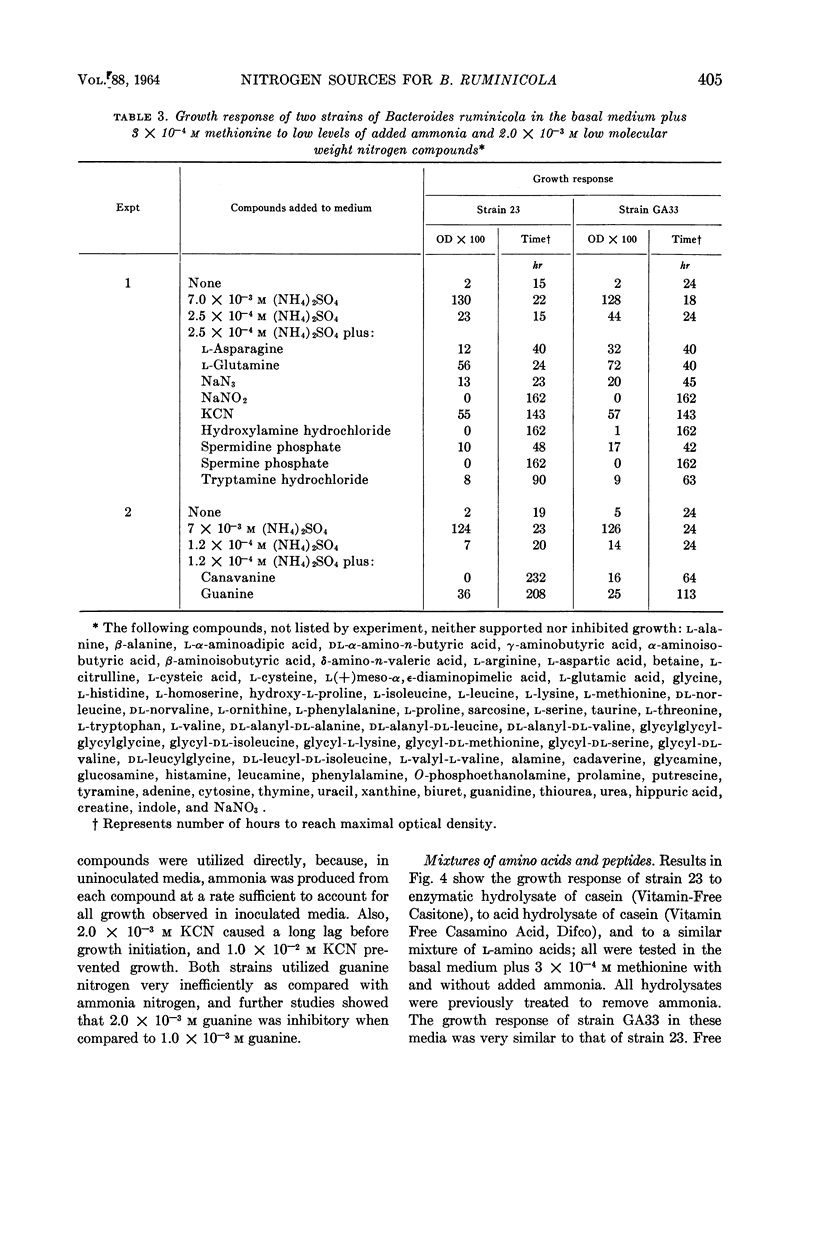
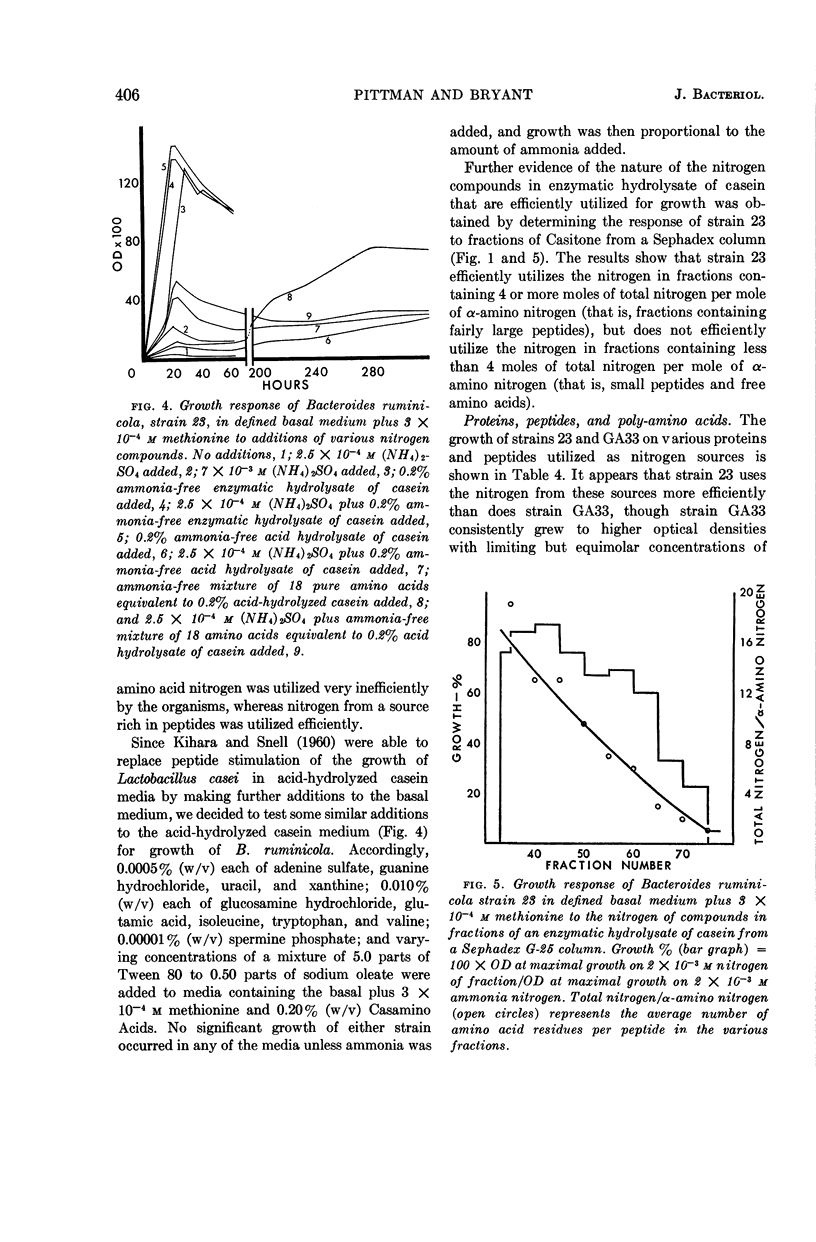
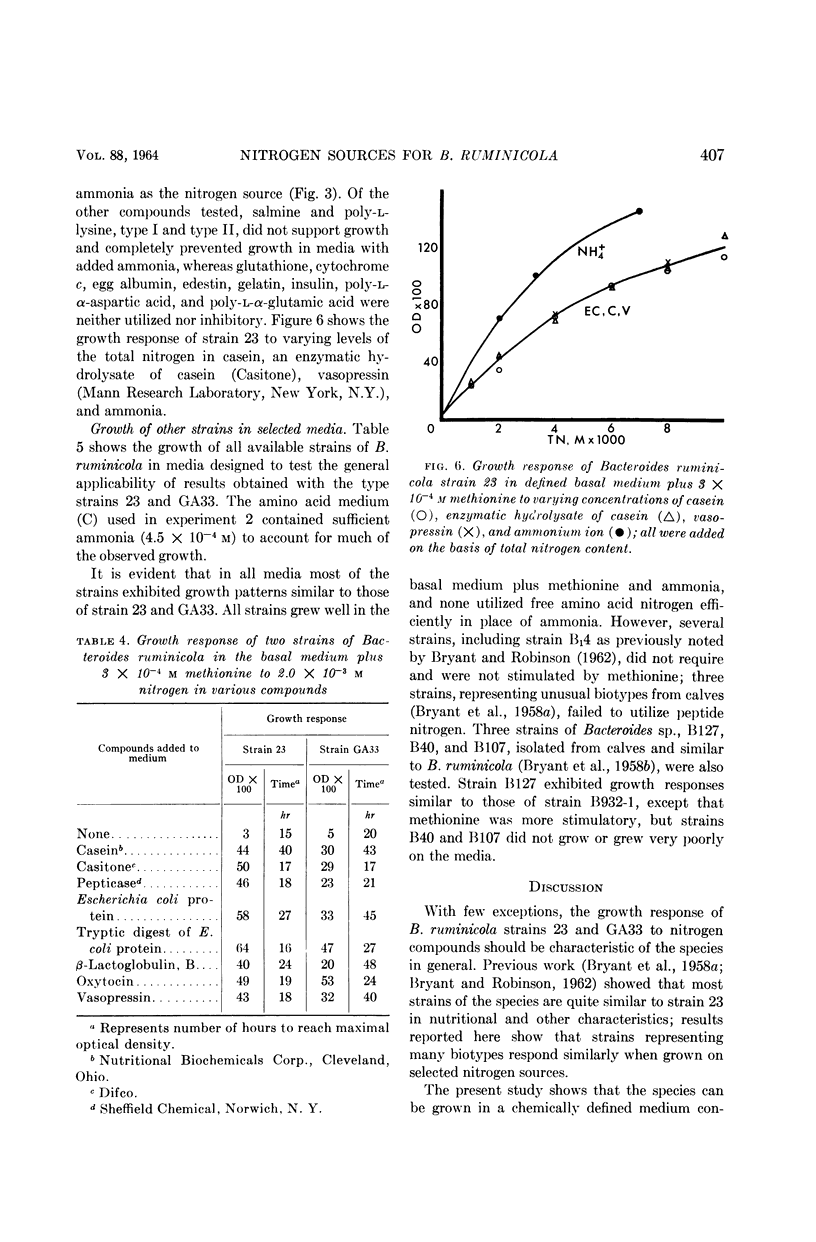
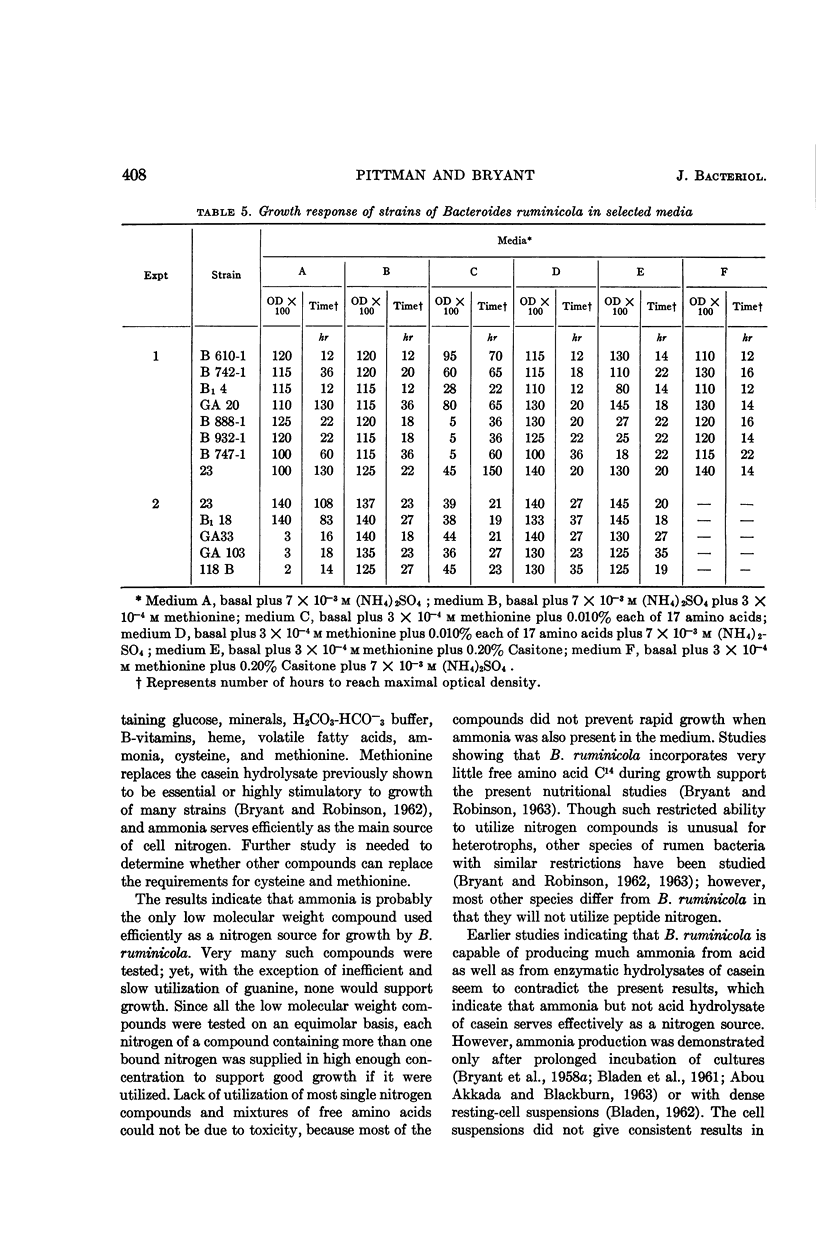
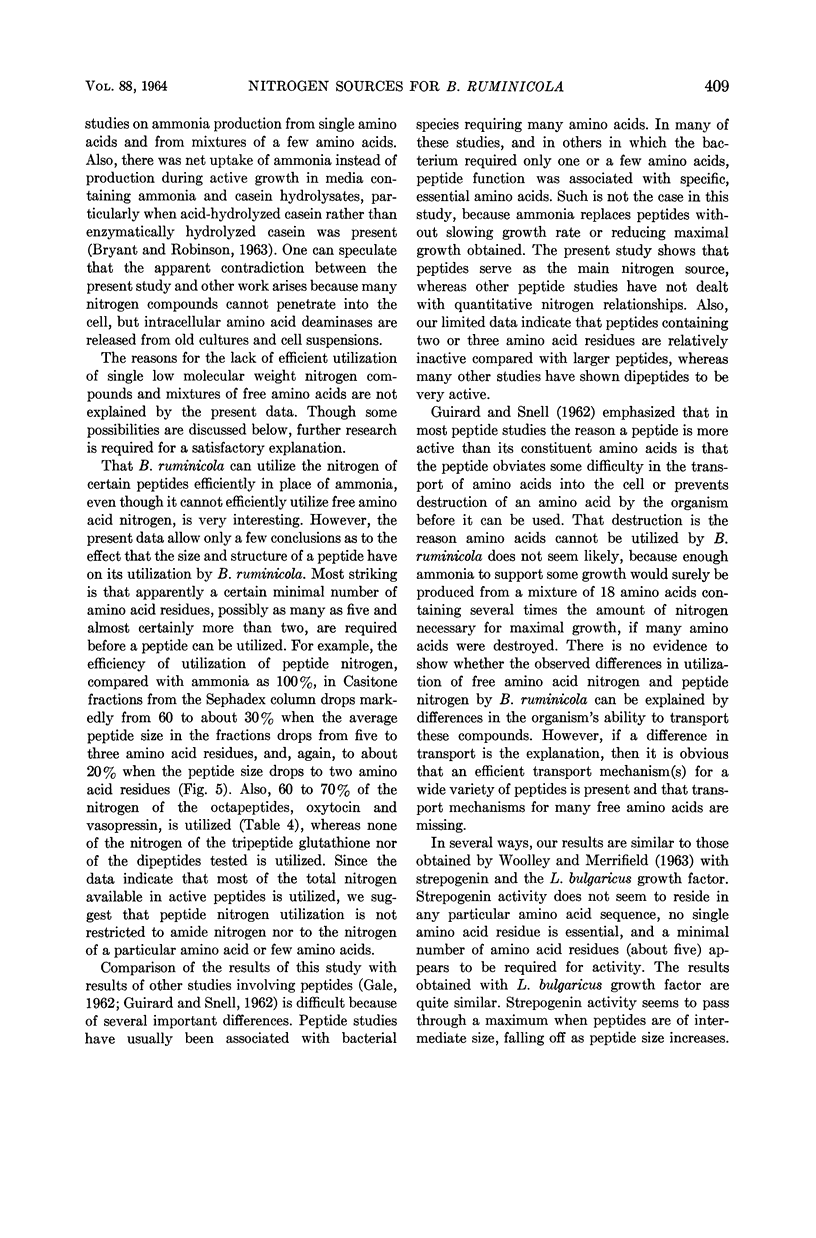
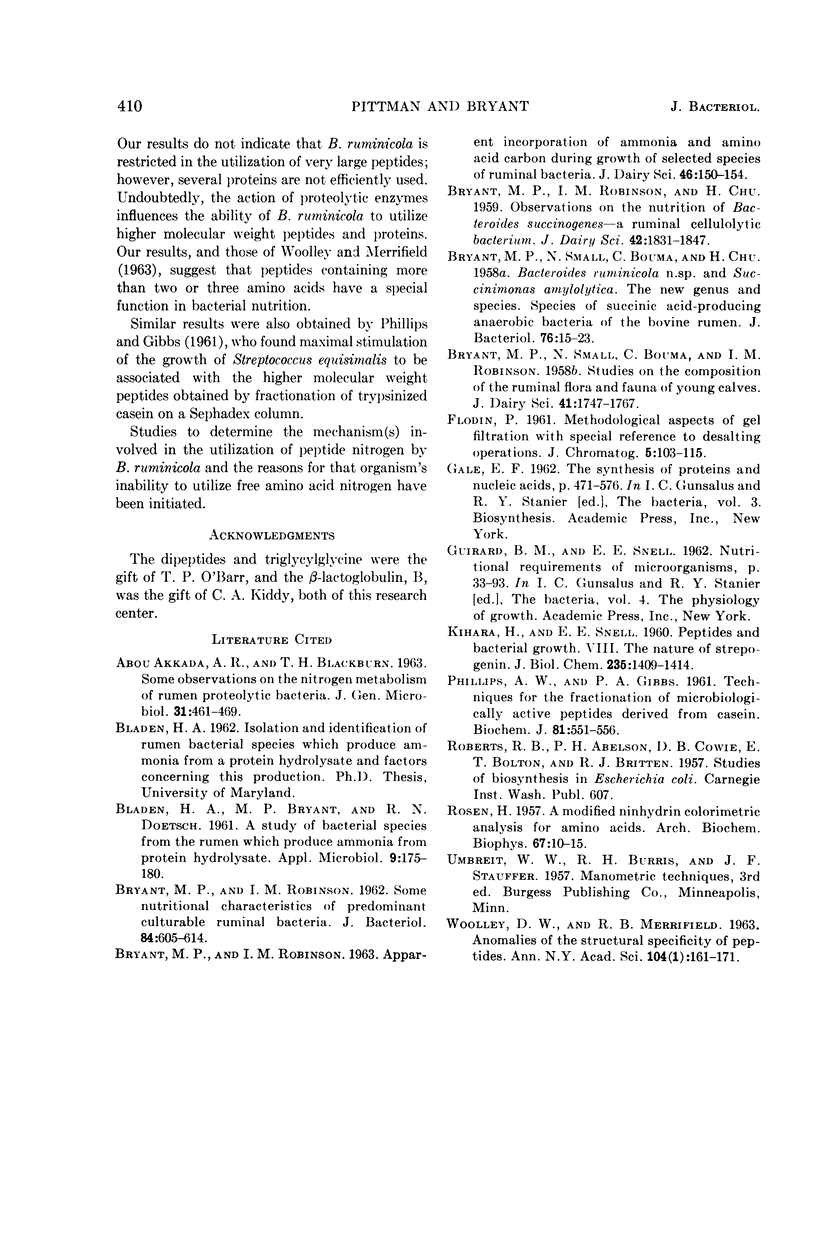
Selected References
These references are in PubMed. This may not be the complete list of references from this article.
- ABOU AKKADA A. R., BLACKBURN T. H. Some observations on the nitrogen metabolism of rumen proteolytic bacteria. J Gen Microbiol. 1963 Jun;31:461–469. doi: 10.1099/00221287-31-3-461. [DOI] [PubMed] [Google Scholar]
- BRYANT M. P., ROBINSON I. M. Some nutritional characteristics of predominant culturable ruminal bacteria. J Bacteriol. 1962 Oct;84:605–614. doi: 10.1128/jb.84.4.605-614.1962. [DOI] [PMC free article] [PubMed] [Google Scholar]
- BRYANT M. P., SMALL N., BOUMA C., CHU H. Bacteroides ruminicola n. sp. and Succinimonas amylolytica; the new genus and species; species of succinic acid-producing anaerobic bacteria of the bovine rumen. J Bacteriol. 1958 Jul;76(1):15–23. doi: 10.1128/jb.76.1.15-23.1958. [DOI] [PMC free article] [PubMed] [Google Scholar]
- Bladen H. A., Bryant M. P., Doetsch R. N. A Study of Bacterial Species from the Rumen Which Produce Ammonia from Protein Hydrolyzate. Appl Microbiol. 1961 Mar;9(2):175–180. doi: 10.1128/am.9.2.175-180.1961. [DOI] [PMC free article] [PubMed] [Google Scholar]
- KIHARA H., SNELL E. E. Peptides and bacterial growth. VIII. The nature of strepogenin. J Biol Chem. 1960 May;235:1409–1414. [PubMed] [Google Scholar]
- PHILLIPS A. W., GIBBS P. A. Techniques for the fractionation of microbiologically active peptides derived from casein. Biochem J. 1961 Dec;81:551–556. doi: 10.1042/bj0810551. [DOI] [PMC free article] [PubMed] [Google Scholar]
- ROSEN H. A modified ninhydrin colorimetric analysis for amino acids. Arch Biochem Biophys. 1957 Mar;67(1):10–15. doi: 10.1016/0003-9861(57)90241-2. [DOI] [PubMed] [Google Scholar]
- WOOLLEY D. W., MERRIFIELD R. B. Anomalies of the structural specificity of peptides. Ann N Y Acad Sci. 1963 Feb 4;104:161–171. doi: 10.1111/j.1749-6632.1963.tb17661.x. [DOI] [PubMed] [Google Scholar]


